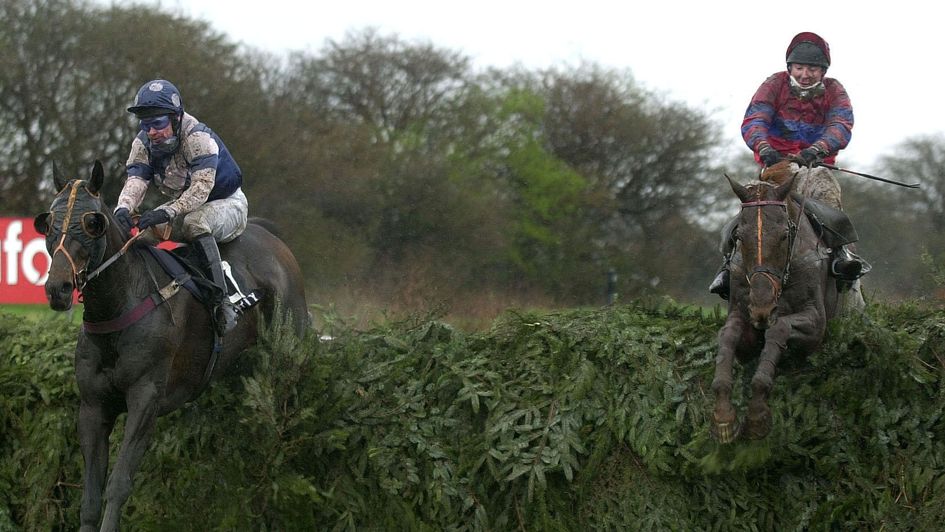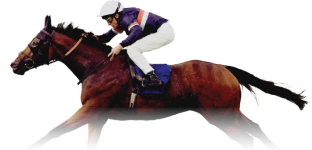With the prospect of testing conditions at Aintree for next Saturday's Grand National, John Ingles looks at past renewals that have taken place on heavy going.
One of the most striking photographs to adorn the dust jacket of Timeform’s Chasers & Hurdlers publication featured on the cover of the 2000/01 annual. It shows an exhausted Richard Guest, eyes closed, and face and silks spattered with mud, with one set of goggles around his neck and another over his chin, while leaning into him is the head of his mount, an equally muddy and weary Red Marauder.
The pair had just won a gruelling Grand National made extraordinary by the extreme conditions for that 2001 renewal. That was the last occasion that Timeform have called the ground ‘heavy’ for a Grand National. With a week to go before this year’s race, Aintree are calling the going ‘soft, heavy in places’ on the Grand National course and there is further rain in the forecast. Hopefully conditions won’t prove as desperate as they were 23 years ago, but even soft ground has been a rarity for a Grand National this century, occurring only in 2006, 2016 and 2018.
The entire three-day Aintree meeting took place on heavy ground in 2001, with only six of the 27 runners in Thursday’s Fox Hunters’ Chase completing – there was a ‘distance’ between the second and third – while seven of the 24 starters made it round in what was then the John Hughes Trophy on Friday, nowadays the Topham, the other race run over the big fences before the National.
The rain kept falling on Grand National day too and in near-waterlogged conditions a maximum field of forty faced the starter with three co-favourites, Edmond, Inis Cara and Moral Support heading wide-open betting on 10/1. The jockeys were warned beforehand to ‘pull up a fence too early rather than one too late’ but few had the opportunity to put that into practice with most out of the race before having to make that decision.
There were fourteen casualties before jumping Becher’s (the sixth) first time, including the gambled-on Inis Cara and, most significantly it turned out, the blinkered Paddy’s Return. The latter was running loose on the outside of the field at the Canal Turn when suddenly veering across the take-off side of that fence, bringing numerous rivals to a standstill in scenes reminiscent of the infamous pile-up that had occurred at the previous fence in 1967, Foinavon’s year, and ending the race for nine of them, including Moral Support.
With the last surviving co-favourite Edmond one of a further three out of the race jumping the Chair, that left only seven still going setting out on the final circuit. But not for long. Once again it was a riderless horse that caused problems, with Edmond the culprit this time. Running across the front of the nineteenth fence, an open ditch, he caused Tony McCoy on Blowing Wind to be unseated on the take-off side which in turn brought Papillon and Brave Highlander to a halt, while Unsinkable Boxer refused independently at the same fence.
The three that were left were soon down to two when top-weight Beau, who’d been going well, unseated his rider at the next fence, two before Becher’s, Carl Llewellyn effectively having lost much of his steering when both reins ended up on the same side of the horse’s neck after an earlier mistake. While Llewellyn’s attempts to catch and remount Beau proved in vain, both McCoy and Ruby Walsh on Papillon, the previous year’s winner, did manage to rejoin the race, albeit hopelessly adrift of the only pair who’d avoided mishap, Red Marauder and Smarty.
That should be ‘somehow avoided mishap’ in Red Marauder’s case as he not only missed the mayhem caused by loose horses but survived a series of his own mistakes, including when ploughing through the fence before Becher’s and clambering over the Canal Turn on the second circuit. Fellow survivor Smarty, ridden by Timmy Murphy, jumped much more soundly and briefly looked like gaining the upper hand after another very awkward jump from Red Marauder four out.
But crossing the Melling Road, Red Marauder began to reel in Smarty again and settled the issue by drawing away approaching the second last and going on to win by a distance from the plugging on Smarty. McCoy and Walsh had agreed to hack round together in ‘survival mode’ until the final fence where McCoy on Blowing Wind waved goodbye, literally, to Walsh on Papillon to claim third prize money.
All forty horses and their riders returned safely, though that didn’t stop opinions being divided about whether the Grand National should have gone ahead in such extreme conditions. Among the trainers and jockeys involved, there was general agreement that the decision to race was a correct one. McCoy, for example, said ‘It may not have looked pretty but it was one of the most exciting races I’ve ridden in.’
But press coverage was very negative in some quarters, though The Times’ take on events was that ‘if the definition of a great Grand National is that it should live long in the memory, this one is up there with the best…Racing, bruised and bullied for weeks by the twin imposters of floods and foot and mouth [the latter had claimed the Cheltenham Festival that season], suddenly had a stage on which to perform. Was it conceivable to turn the lights out and ask the audience to come back another time? Aintree took a gamble and won.’
Whether such a gamble with the race’s image (and that of jump racing as a whole) would be taken in similar circumstances in today’s more risk-averse climate is much less certain. The practice of remounting, for example, has been consigned to the past, as has a forty-runner field with effect from this year, while there are catchment areas nowadays to reduce the risks caused by horses running loose. Rather than the heavy ground directly taking its toll in 2001, it was the antics of the riderless Paddy’s Return and Edmond which depleted the field. The ‘chaos factor’ is always lurking in the Grand National, as in 1967 when Foinavon was the only one to clear the twenty-third fence at the first attempt, but conditions were not at all testing that year.
But heavy ground makes such incidents more likely and was clearly a big factor in the victories of the one-eyed Glenside in 1911, Shaun Spadah in 1921 and Tipperary Tim in 1928, all famous as being the only runners to complete without mishap in those years. Glenside’s winning time of 10m 35s stood as the slowest of the twentieth century right up until Earth Summit won another of the most gruelling more recent Grand Nationals in 1998. Earth Summit (ridden by Carl Llewellyn) beat just five other finishers, one of those remounted, when winning in 10m 51.56s.
Shaun Spadah got round in 10m 26s from a trio of remounted finishers as Glenside had done. Runner-up The Bore, who was sent off favourite, fell two out, with his amateur rider Harry Brown, with the added incentive of also being the horse’s owner, persevering despite having only one good arm after breaking his collar-bone in the fall. Tipperary Tim’s shock victory at 100/1, in a time of 10m 23.4s, also featured a pile-up at the Canal Turn which in those days had the added hazard of a ditch on the take-off side which was promptly filled in. Only one other completed, Billy Barton, who fell at the last when upsides. Incidentally, the victory of ‘no-hoper’ Tipperary Tim encouraged a record field of 66 to take their chance the following year.
The times of these heavy-ground Grand National winners are relevant because it puts into context just how bad the ground was, or at least how slowly they went, in 2001. Few modern-day Grand Nationals have taken more than ten minutes to win but Red Marauder came home in 11m 0.06s, the slowest, apparently, since Zoedone beat the smallest field ever in 1883. Another eleven-minute Grand National would seem unlikely given the race is no longer run over its traditional distance of four and a half miles. Tiger Roll’s first victory in 2018 came in the race’s slowest time (9m 40.2s) over its current distance, with around a third of the field being pulled up that last time it was run on soft ground.
There have been occasions when the Grand National hasn’t taken place but the weather has never been to blame. Probably the closest the race came to being cancelled due to excessive rain was in 1955 when it only went ahead after course inspections, the latest one just two and a half hours before the off. They had to omit the water jump but nearly half the field of thirty got round, with Quare Times winning in the slowest time since Tipperary Tim caused his upset.
More from Sporting Life
- Racecards
- Fast results
- Full results and free video replays
- Horse racing news
- Horse racing tips
- Horse racing features
- Download our free iOS and Android app
- Football and other sports tips
- Podcasts and video content
Safer gambling
We are committed in our support of safer gambling. Recommended bets are advised to over-18s and we strongly encourage readers to wager only what they can afford to lose.
If you are concerned about your gambling, please call the National Gambling Helpline / GamCare on 0808 8020 133.
Further support and information can be found at begambleaware.org and gamblingtherapy.org.










